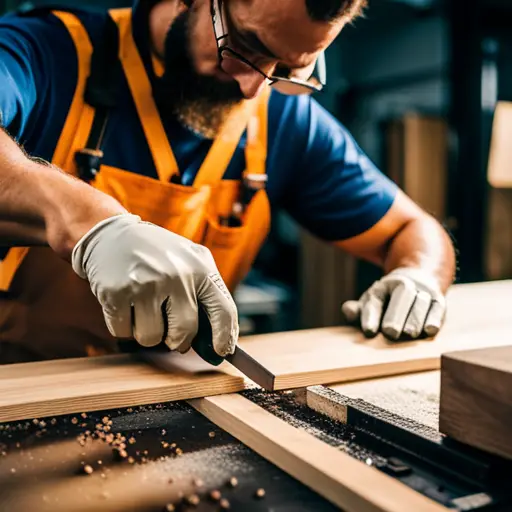
Dado Woodworking Techniques Every Woodworker Should Know
Dado joints, those rectangular slots cut into the edge or face of a piece of wood, are a staple in woodworking for good reason. They provide a strong, precise, and visually appealing method for joining wood pieces together. Whether you're building cabinets, shelves, or furniture, mastering dado techniques will elevate your woodworking skills and lead to professional-looking results.
Understanding Dado Joints
The essence of a dado joint lies in its simplicity: two pieces of wood are joined by interlocking grooves and ridges. The groove, or dado, is cut into one piece of wood, while the corresponding ridge is created on the other. This creates a strong, flush, and visually appealing joinery. The most common method for cutting dados is with a table saw, although dado sets can be used with other tools like routers or chop saws.
Essential Tools and Techniques
Before diving into dado cutting, gather the necessary tools and familiarize yourself with the techniques:
The Dado Set
A dado set is a specialized set of saw blades designed specifically for cutting dados. It typically consists of two outer blades, which define the width of the dado, and one or more chipper blades that remove the waste material. Dado sets are available in various sizes, so choosing the right one is crucial for your project. When selecting a dado set, consider the desired width of the dado and the thickness of the wood you'll be cutting.
The Table Saw
The table saw is the most common tool for cutting dados. It offers precision, control, and the ability to cut dados across the entire width of a workpiece. You'll need a dado set, a table saw, and a miter gauge to cut your dado accurately. Before you start, ensure your table saw is properly aligned and that the dado set is securely installed.
Safety First
Woodworking involves potential risks, and using power tools requires extreme caution. Always wear safety glasses, hearing protection, and a dust mask. Ensure the work area is clean, free of clutter, and well-lit. Never attempt to cut wood while wearing loose clothing or jewelry that could get caught in the machinery. When working with a table saw, always use a push stick to keep your fingers clear of the blade, and never attempt to remove waste material from the blade while the saw is running.
Key Techniques for Success
Successful dado cutting requires a combination of precise measurements, careful setup, and consistent techniques. Here's a breakdown of some key techniques:
Marking and Measuring
Before starting the cutting process, accurate markings are crucial. Carefully mark the exact position and dimensions of the dado on the workpiece. Use a combination square and a pencil to ensure that your markings are precise. When measuring, double-check your measurements to avoid errors. Once you're confident in your markings, use a sharp chisel or router to create a starting groove for the dado set. This will help the saw blade guide more smoothly and prevent it from wandering.
Setting Up the Table Saw
Proper setup is essential for clean and precise cuts. Mount the dado set on your table saw, ensuring it is properly aligned and secured. Use a miter gauge to position the workpiece accurately against the fence. Adjust the height of the blade to match the desired depth of the dado. For accurate depth adjustments, use a depth gauge and a marker to indicate the precise depth on the blade.
Cutting the Dado
With the workpiece securely positioned on the table saw, use a firm and steady motion to guide it through the dado set. Apply moderate pressure to keep the workpiece firmly against the fence. Avoid using excessive force, as this can cause the blade to bind or wander. If the dado is deeper than the height of the blade, make multiple passes, gradually increasing the depth with each pass. For each pass, reposition the workpiece to ensure that the cut is consistent and precise.
Expanding Your Dado Skillset
Once you've mastered the fundamentals of dado cutting, explore more advanced techniques to enhance your woodworking projects:
Using a Router for Dados
While table saws are commonly used, routers can also be effective tools for cutting dados. A router offers flexibility and allows you to create more intricate dados. Using a dado bit or a stacked set of router bits, you can create dados of various shapes and sizes. However, router dado cutting requires more precision and practice, and it's crucial to use a fence or jig for accurate cuts.
Creating Stop Dados
Stop dados, also known as "blind dados," are dadoes that don't extend completely through the workpiece. They are useful for creating hidden joints or for creating a decorative effect. To create a stop dado, simply use a stop block to limit the depth of the cut. This can be done with a table saw or a router. Use a stop block to prevent the blade or router bit from going through the workpiece entirely.
Experimenting with Dado Variations
Beyond traditional dadoes, explore variations that enhance the visual appeal and functionality of your projects. You can create angled dados, tapered dados, or dadoes with rounded edges. Get creative and experiment with different dado configurations to add unique touches to your woodworking creations.
Conclusion
Mastering dado woodworking techniques opens a world of possibilities for your woodworking endeavors. With proper tools, careful setup, and consistent practice, you can create strong, accurate, and visually appealing dado joints. Whether you're building furniture, cabinets, or intricate decorative pieces, the ability to cut dados with precision will set your woodworking skills apart.
0 comments:
Post a Comment
Note: Only a member of this blog may post a comment.